Wadjemup Museum
Wadjemup Museum is a place to explore Rottnest Island’s rich history. The museum has recently had a facelift and features a range of exhibits. Its a great spot to really get to know the Island.
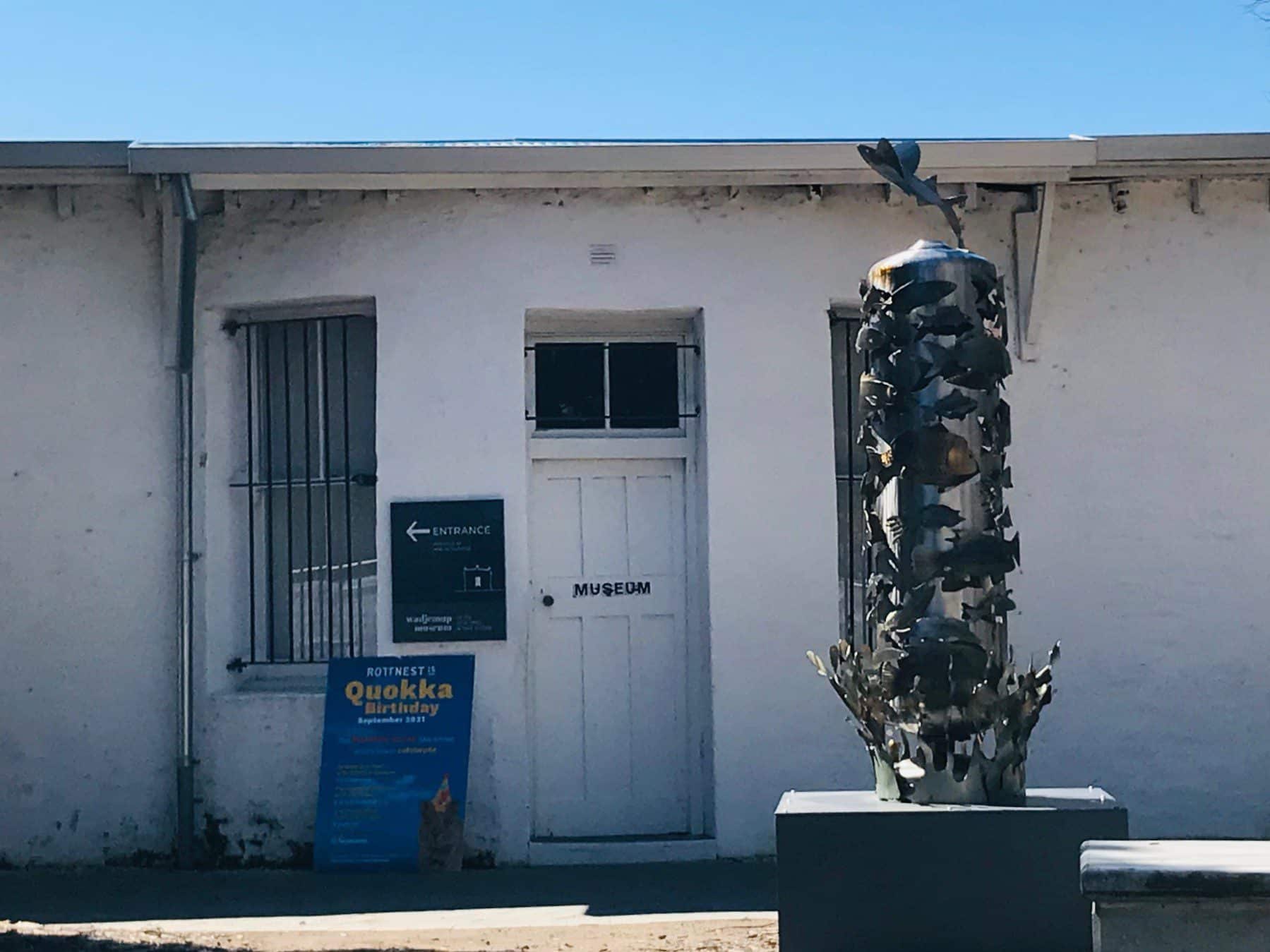
The Museum has recently undergone a makeover with a fresh, minimalist finish. The building is a blend of the Old Mill building, the textured original stone walls and wooden floors, with a fresh new look of white walls and new display cabinets.
If you want to learn Wadjemup’s varied history, then this is a great place to visit. The Wadjemup Museum is also a good jumping off point for a children’s school history project.
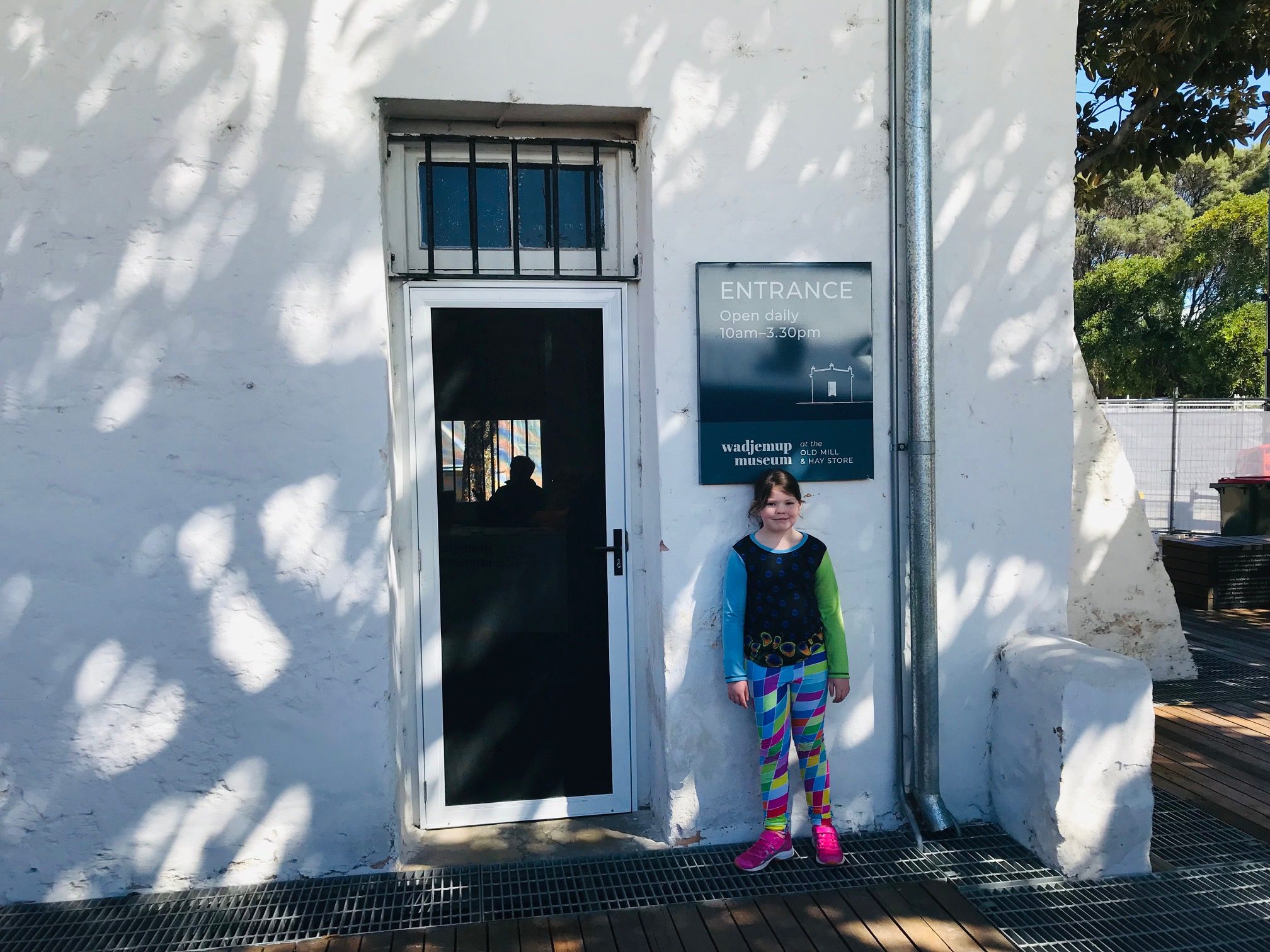

On heading to Wadjemup Museum, you are first greeted with large outdoor sculptures. These include a mixture of ocean themes and reflections of the island. For instance, there is a giant shell, whale bones, and a chapel with a towering spire.
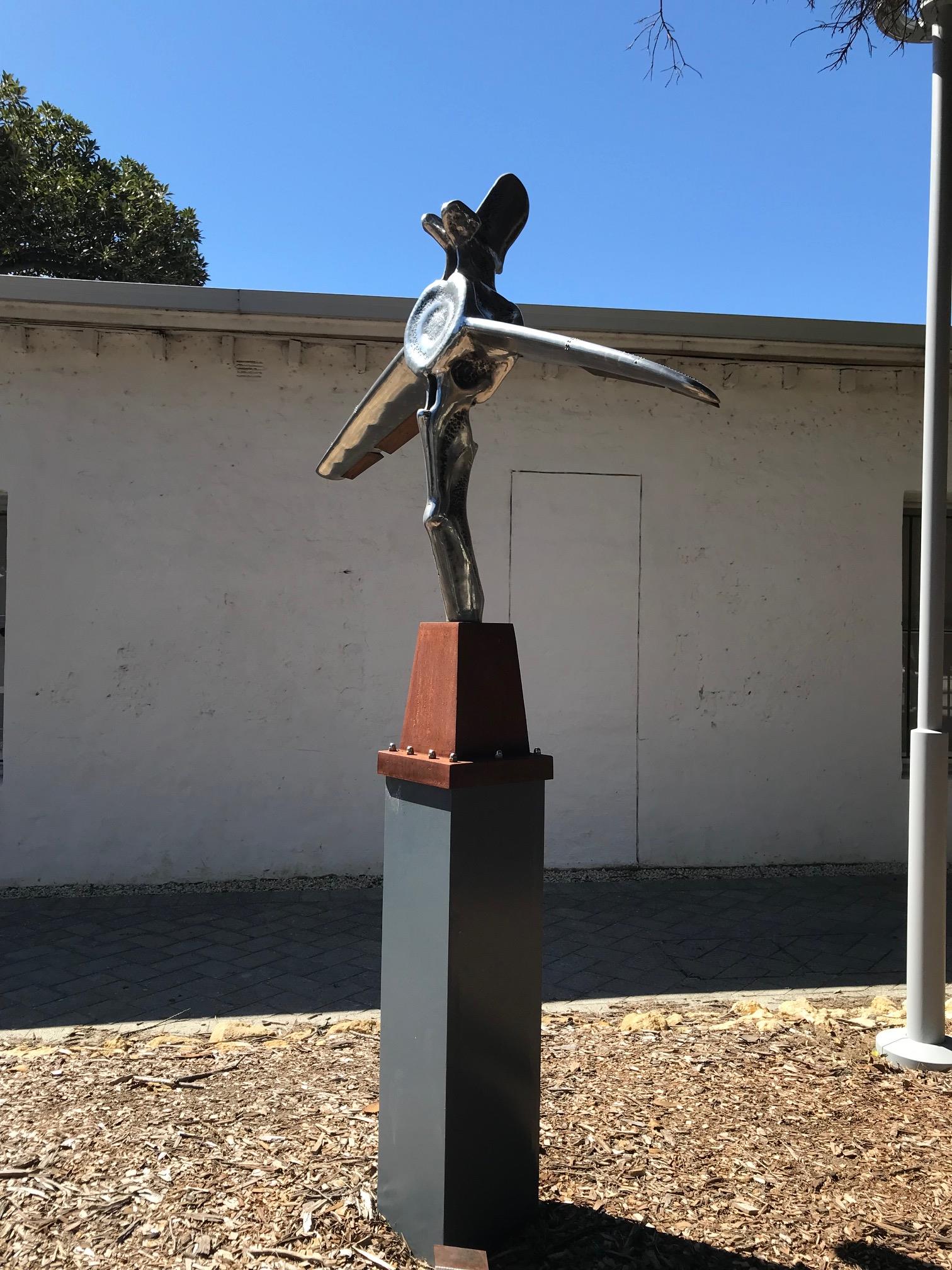

Inside, you begin by exploring the Island’s very early history. First Nations people have been visiting the Wadjemup for thousands of years. The island was connected to the mainland via a land bridge, which is is now a chain of islands, including Garden Island and Carnac Island. This is how the Whadjuk Noongar people people accessed the area. They could simply walk across. The name for Rottnest Island in the Whadjuk Noongar people’s language is Wadjemup, which means ‘place across the water where the spirits are’.
With this First Nations history in mind, there are examples of indigenous art and artifacts that have been found on the island. The glass spearheads are both beautiful, and look incredibly sharp and dangerous. There is a seating area near here where you can hear First Nations people discuss the significance of the Island and it’s mixed history in their culture.


The exhibits also discusses the exploration of the WA coastal area. One of the most well-known explorers in the South West is probably the Dutch explorer Vlamingh, who named the island. On seeing the quokkas, he thought they were large rats, and so named the land Rottnest Island, meaning Rat’s Nest Island.
At the centre of this first room is an example of art and craft created by people living on Wadjemup. A lighthouse keeper’s daughter created the seaweed prints. These are over a hundred years old, and are still strikingly beautiful. In addition, there is an example of a handwoven hat made in 1940 from local seaweed grasses. Also displayed is a swatch of netted fabric woven from teabag strings during the period that Wadjemup was used for Quarantine during 2020.


Other examples of the exhibits in this first area includes more items from the lighthouse keepers who have lived on Wadjemup. For example, there is a large, heavy jacket that would have helped protect the keeper who wore it from the cold and lights he would see by. The main lighthouse on the Island took approximately 9 years to build. There is also information regarding early settlers to the island.
In the centre of the rear room is an original 19th century millstone. This is opposite a photo of the those who lived here around that time. A prison farm ran to grow and process grain to support the prisoners, staff and their families living on the island. In addition, this generated income support for the Western Australian colonial government. The Old Mill and the Hay Store were vital for this.
This part of the museum also discusses more of Wadjemup’s darker past. From 1838 to 1931, with the exception of a brief closure between 1849 to 1855, the island operated as a prison. In a similar vein to Flinders Island off Tasmania, Wadjemup became a prison for First Nations people. Around 4,000 Aboriginal men and boys from all over WA were incarcerated on the island. The cells were tiny and cold, with up to five prisoners in a two metre by three metre cell.

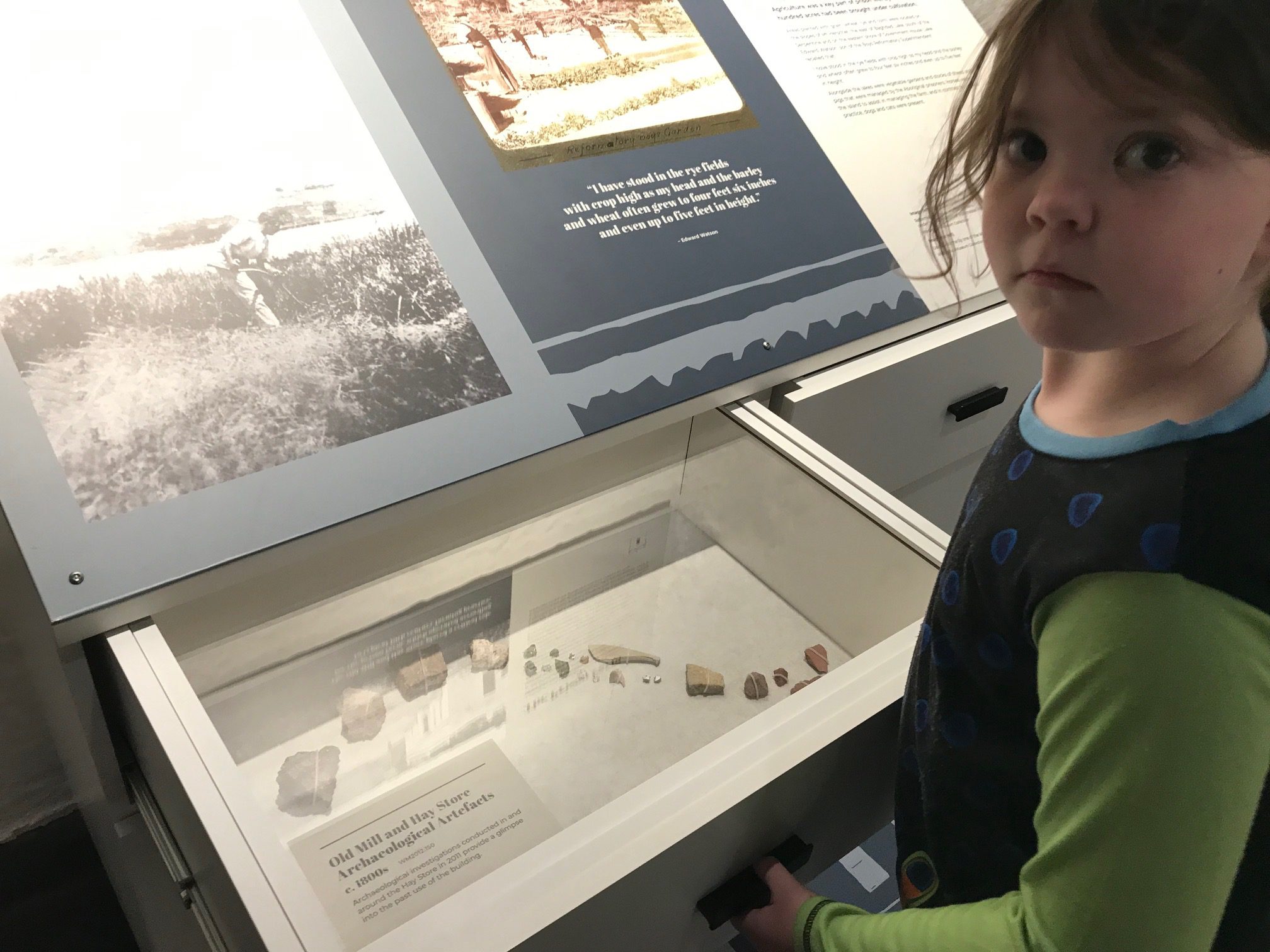
With this tragic history in mind, the Rottnest Island Authority is working to reclaim this part of Wadjemup’s history and have it acknowledged and respected. The Wadjemup Museum seems to respectfully acknowledge the history and people of the past.
The very rear of the Wadjemup Museum features art created during the Quarantine on the island in 2020. These include pieces made from natural materials, sculpture and pieces that represent the island. These are strictly ‘hands off’. Please look with eyes only.
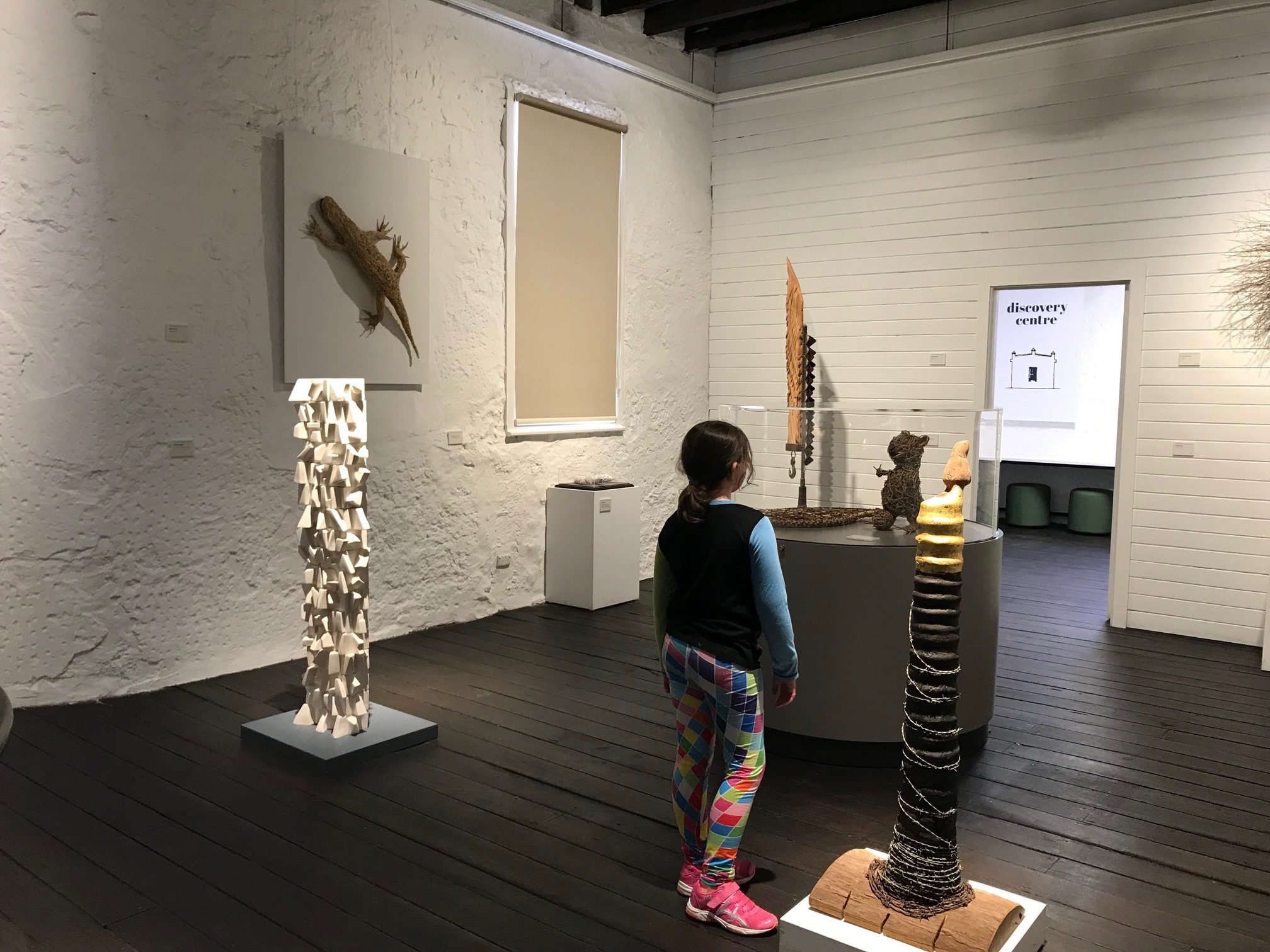
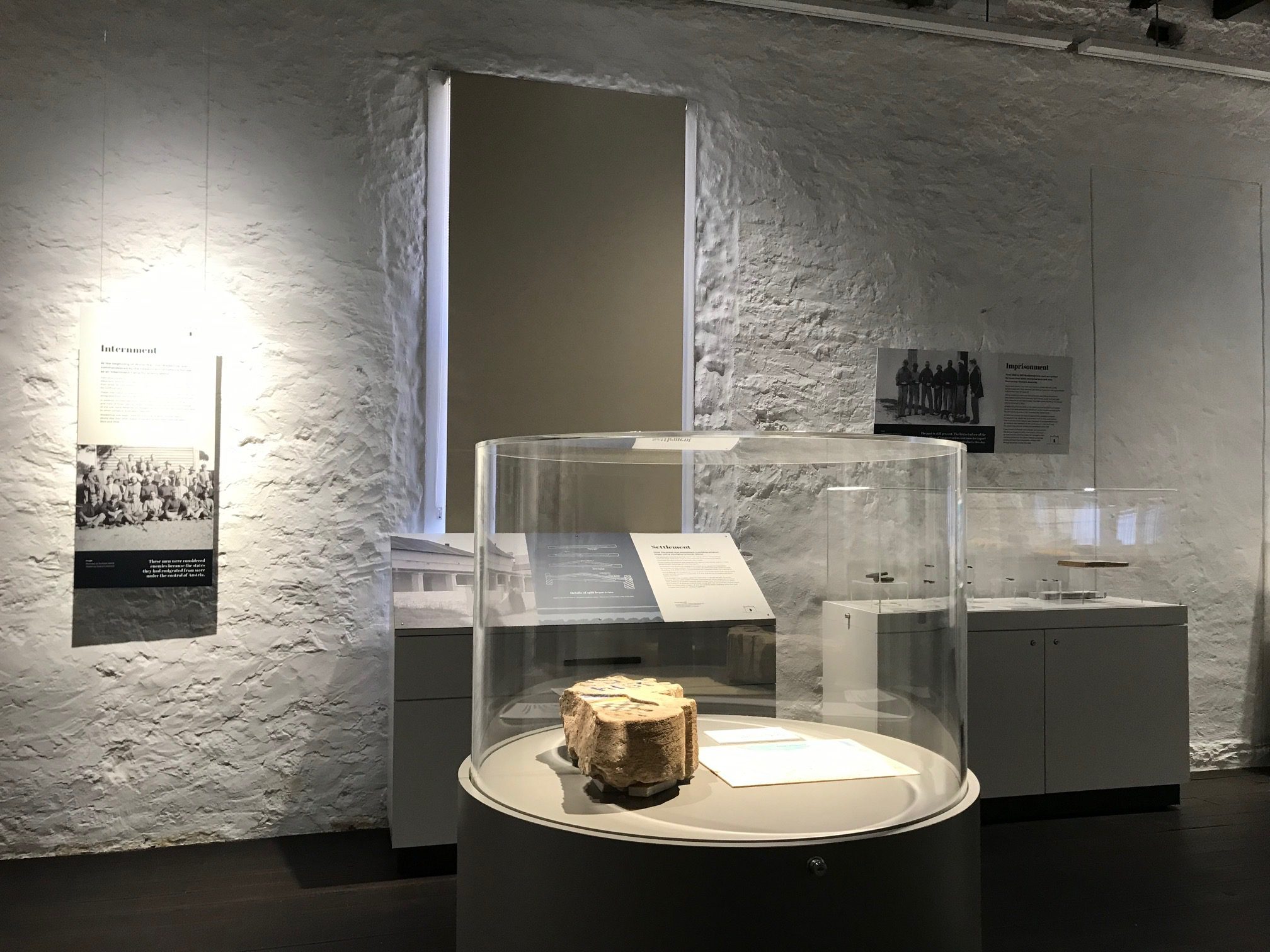
Separating the front and rear sections of the Museum is a video presentation. This talks about the history, and about nature and the Indigenous significance of the island for example. It’s a good spot to sit and quietly take in some information.
During your visit, we recommend checking out the drawers around the museum. These contain hidden treasures and artifacts that you may otherwise miss. The volunteer guides don’t always open these up.
Likewise, make use of the volunteer guides at the museum to answer all your questions about the island. It’s a pretty quiet gig at Wadjemup Museum apparently, and the guides love to tell visitors share what they know about the island.
In conclusion, Wadjemup Museum is a contrast of darkness and light. It is a mix of the uglier side of history and the beauty of art and the island. It is however respectfully and beautifully presented, and this makes the information easily accessible for the public. If you’re ready to begin exploring all sides of WA’s history, this is a great exhibit to begin your journey.
My child was a little disappointed there wasn’t more interactive options for kids like her. The listening station and the drawers we could explore definitely helped hold her interest however. So, with this in mind, age seven or eight is probably the youngest I would personally take to visit the museum. Children with more attention span, who are willing to stop and read the information, will get more out of it. I liked that it was an inexpensive spot to visit, and that this important information is being shared. During our visit, a new playground construction was in progress on land adjacent to the museum. This will probably also help for families visiting in future.
Wadjemup Museum
Located on Wadjemup, behind the Bakery and General Store in the Settlement.
Wadjemup Museum is open from 10am to 3.30pm daily.
Entry to the Wadjemup Museum is by donation, with proceeds going to the Rottnest Foundation. PayWave and cash donations are available.



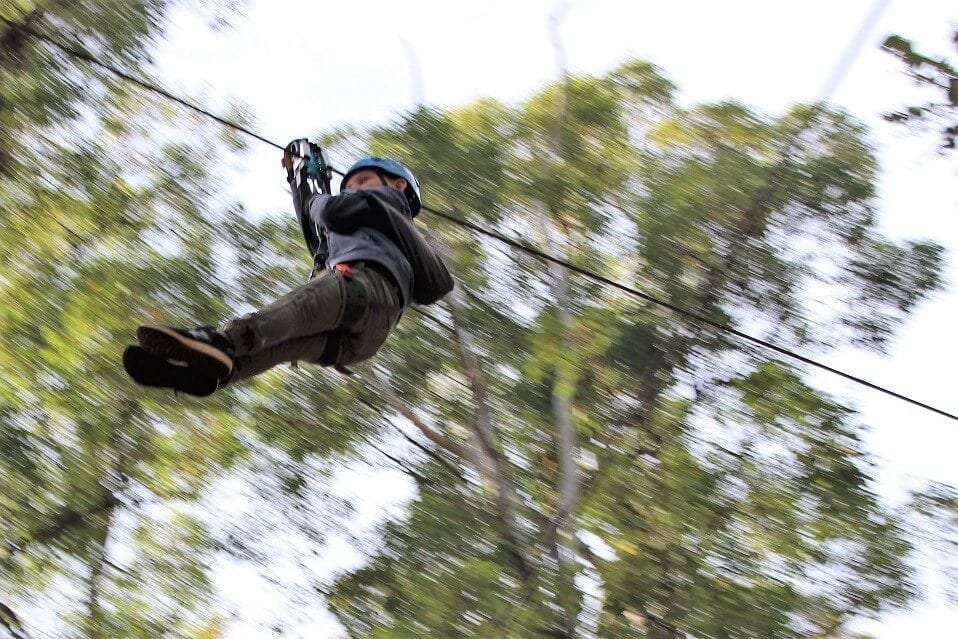

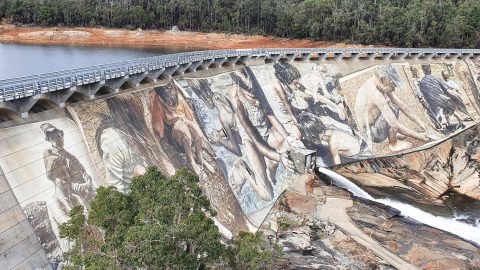











Well I have just been reading about Rottnest Island Museum by yourself Holly Clarke I was wondering if you have been to the same museum. Ok it’s been painted and looks great and love the sculptures outside beautiful and a lovely welcome to the museum. I have been on the island for 16 days in the last months (May/June/August), had a great time and can’t wait to get back. I think people sometimes have to look at Rottnest with coloured glasses because it is under construction/improvement and will look amazing when completed in the summer holidays but the museum is so disappointing, gold coin and great volunteers, however your review about the audio only has one indigenous tribes person speaking for 45 seconds really, the others history of education and abilities to work with the male committee of the island and her self appreciation didn’t hold my interest at all, the young lady on the board of Rotto who was less than appreciative of the visitors to the island well I will leave that. The history of the those that suffered shows photos but not many dated or occasion event mentioned. Guards wearing medals with the indigenous sitting on the ground…. Only left me to presume it was ANZAC day? I felt that the beautiful displays would be better if they had somethings other than the t-shirt and hat of the volunteers (who are deserving of a mention) the floral and fawna could be any where on the mainland. Not mention of our Quokkas. No mention of the tentland that was which is now the reflection area. In the 80s it was a great place to spend a wet day or just to learn and educate our kids….. I now feel that the board can’t really work out what is appropriate and doesn’t offend than tell the Rottnest Island history. History is history and can be unpleasant but that’s history. I highly recommend Rottnest Island as an excellent place to relax, enjoy the beautiful beaches the lovely vista views and the friendly Islanders. Holly thanks for allowing me to respond I wish you and family well and more exciting visits to Rotto.